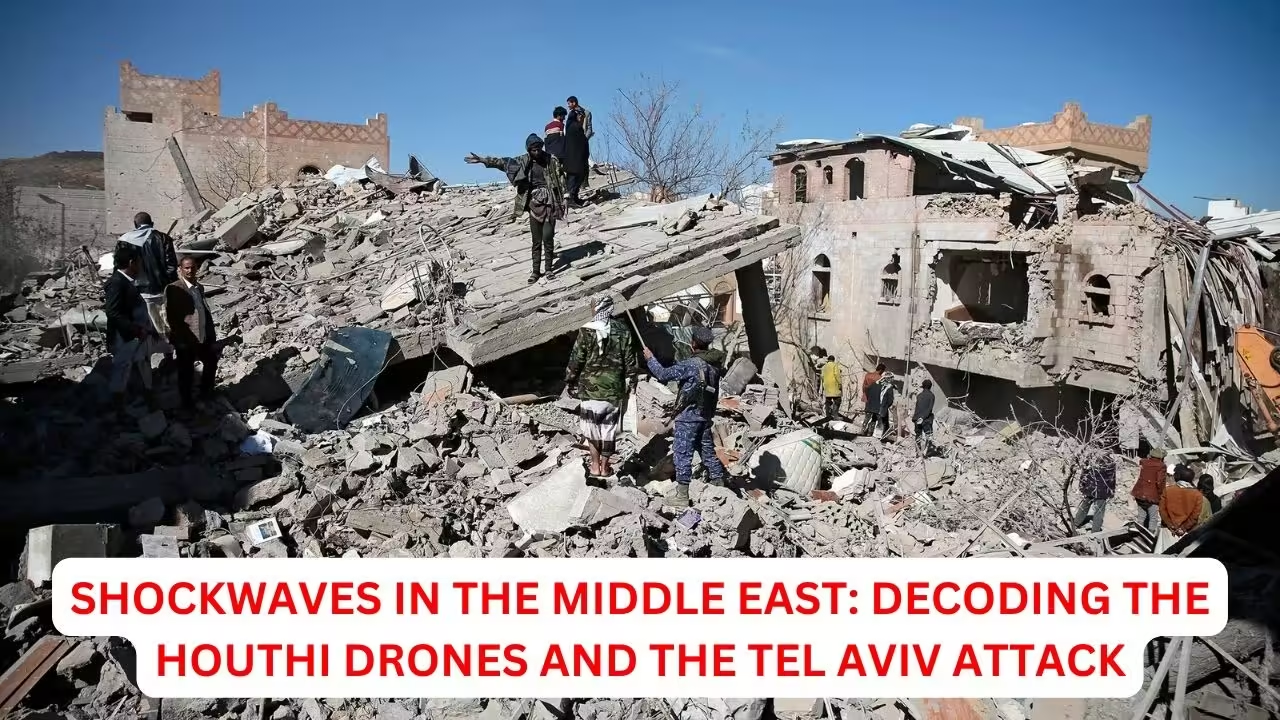Tensions have reached a boiling point in the Middle East with the recent drone attack on Tel Aviv by the Houthi rebels from Yemen. This event has not only exacerbated the already delicate geopolitical landscape but has also raised significant questions about the future of security, diplomacy, and the role of unmanned aerial vehicles (UAVs) in modern warfare. This blog post will take you through an analysis of the Houthi drones, the details of the Tel Aviv attack, and the broader implications of this development.
Introduction to the Houthi Drones Phenomenon
Drone technology has revolutionized modern warfare, providing non-state actors like the Houthis with the capability to launch sophisticated attacks. But what exactly are Houthi drones, and how did they become such a formidable tool in their arsenal?
Originally, the Houthis started with rudimentary UAVs but quickly adapted more advanced models like the Samad-3, which have become increasingly effective in long-range missions. These drones are believed to be either locally produced or sourced with assistance from Iran. Understanding the technology behind these drones provides crucial insight into the scope and scale of Houthi operations.
The Anatomy of the Tel Aviv Attack
The attack on Tel Aviv is one of the most audacious undertakings by the Houthi rebels. On July 20, 2024, a fleet of drones managed to penetrate Israeli airspace, targeting key infrastructure within Tel Aviv. The strikes led to significant damage and caused widespread panic among residents.
What makes this attack particularly concerning is the precision and coordination involved. Israeli defense systems, including the Iron Dome, were unable to intercept all the incoming drones, highlighting vulnerabilities that were previously thought to be secure. The use of multiple drones in swarming tactics overwhelmed defense mechanisms, making this a case study in modern asymmetric warfare.
Historical Context of Houthi-Israel Relations
Relations between the Houthis and Israel have always been tense but rarely have they escalated to direct conflict. Historically, the Houthis have focused their efforts on their immediate adversaries within Yemen and Saudi Arabia. However, the shift towards targeting Israel signifies a broader strategy possibly aimed at gaining greater regional influence.
The involvement of external actors like Iran cannot be overlooked. Iran’s support for the Houthis has been well-documented, and this attack may well be part of a larger strategy to destabilize Israel and its allies in the region.
The Role of Iran in the Conflict
Iran’s influence in Yemen has been a pivotal factor in empowering the Houthi rebels. From providing training and supplies to offering strategic guidance, Iran has played a crucial role in the Houthis’ military successes. This relationship raises questions about the extent to which Tehran was involved in planning and executing the Tel Aviv attack.
International observers argue that this proxy war serves Iran’s interests by applying pressure on Israel indirectly. Tehran’s ultimate goal may be to establish a stronger foothold in the region, thereby enhancing its strategic depth against its adversaries.
Implications for Regional Security
The drone attack on Tel Aviv has far-reaching implications for regional security. It signals a new level of capability for the Houthis and sets a dangerous precedent for other non-state actors. Furthermore, it has ignited a debate within Israel about the effectiveness of its defense systems and the need for technological upgrades.
Neighboring countries are also on high alert, fearing that they could be the next targets. The incident has prompted urgent discussions among Gulf Cooperation Council (GCC) states about enhancing collective security measures and intelligence-sharing protocols.
The Humanitarian Impact on Yemen
While the focus has been on the geopolitical ramifications, it’s essential to remember the humanitarian crisis in Yemen. The country has been ravaged by years of conflict, and the resources diverted towards military efforts have exacerbated the suffering of ordinary Yemenis.
International aid agencies are finding it increasingly difficult to operate in such a volatile environment. The continuous cycle of violence only deepens the humanitarian crisis, making it imperative for the global community to find a resolution to the conflict.
The Response from the International Community
The international community’s reaction to the Tel Aviv attack has been swift and varied. Countries like the United States have condemned the attack, reiterating their support for Israel’s right to defend itself. The United Nations has called for restraint and urged all parties to return to diplomatic negotiations.
On the other hand, some nations have pointed fingers at Iran, calling for increased sanctions and diplomatic isolation. The International Court of Justice (ICJ) may also play a role in addressing the legal ramifications of such attacks, although its effectiveness remains to be seen.
The Role of Modern Warfare
The use of drones in the Tel Aviv attack underscores the evolving nature of modern warfare. Drones offer a low-cost, high-impact method for non-state actors to challenge more powerful adversaries. This poses significant challenges for traditional military strategies and calls for a reevaluation of defense policies.
Future conflicts are likely to see an increased use of drones and other unmanned systems, making it essential for nations to adapt their defense mechanisms accordingly. Technologies like artificial intelligence and machine learning will play a pivotal role in developing more effective countermeasures.
What This Means for Israel
For Israel, the attack is a wake-up call. It highlights the limitations of existing defense systems and the need for rapid innovation. The government is likely to invest heavily in research and development to counter the drone threat, including exploring options like laser defense systems and electronic warfare.
Politically, the attack has put pressure on Prime Minister Benjamin Netanyahu’s administration, which has been criticized for not foreseeing the threat. This could have long-term implications for his leadership and Israel’s domestic politics.
Future Prospects for Peace
The Tel Aviv attack has undoubtedly set back prospects for peace in the region. However, it also provides an opportunity for renewed diplomatic efforts. The international community must leverage this moment to push for a comprehensive peace plan that addresses the root causes of the conflict.
This includes engaging with all stakeholders, including the Houthis, to find a sustainable solution. The road to peace will be long and arduous, but it is the only way to ensure lasting stability in the region.
The Importance of Vigilance
In conclusion, the drone attack on Tel Aviv by the Houthi rebels from Yemen is a stark reminder of the complexities and dangers of modern warfare. It highlights the need for constant vigilance, rapid technological adaptation, and robust diplomatic efforts to mitigate conflicts.
For Middle East enthusiasts, this event offers a wealth of lessons and insights into the current state of regional dynamics. It’s a call to remain informed, engaged, and proactive in understanding the intricate web of relationships and conflicts that define this volatile region.



